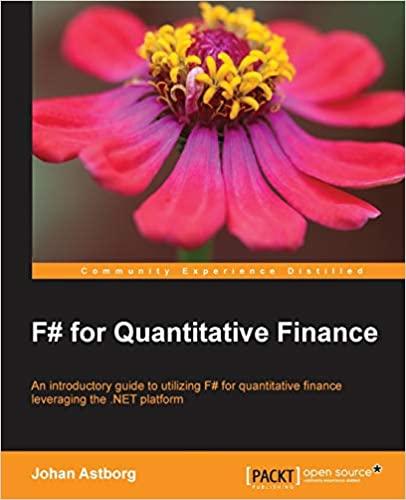Question
______ 6. You are trying to decide whether to run your business as a corporation or as an individual owner (for example, as a sole
______ 6. You are trying to decide whether to run your business as a corporation or as an individual owner (for example, as a sole proprietorship). One of the factors is the problem of double taxation. Assume that the corporate income tax rate is 35%, the individual income tax rate on dividend income is 15%, and the individual income tax rate on other income is 39.6%. (Note use these tax rates. Dont use the actual tax rate schedule.) The business is expected to generate $625,000 of taxable income. Similar to the example given in class, assume that the amount of dividend income is equal to the corporate after-tax cash flow. How much more after-tax cash flow will you have if you run the business as a sole proprietorship rather than as a corporation? Hint: fill out the following table to help answer the question.
| Operated as corporation |
| Individual owner |
|
| Corporation |
| Individual |
|
| Cash Revenue | $825,000 | Cash Revenue | $825,000 |
| Cash Expenses | $200,000 | Cash Expenses | $200,000 |
| Taxable Income | $625,000 | Taxable Income | $625,000 |
| Corporate Income Tax (35%) |
| Individual Income Tax (39.6%) |
|
| Net Income |
| After-tax net cash flow |
|
|
|
|
|
|
| Stockholder |
|
|
|
| Dividend Income |
|
|
|
| Individual Income Tax (15%) |
|
|
|
| After-tax net cash flow |
|
|
|
______ 7. You are trying to decide whether to run your business as a corporation or as an individual owner (for example, as a sole proprietorship). One of the factors is the problem of double taxation. Assume that the corporate income tax rate is 35%, the individual income tax rate on dividend income is 15%, and the individual income tax rate on other income is 39.6%. (Note use these tax rates. Dont use the actual tax rate schedule.) The business is expected to generate $720,000 of taxable income. Similar to the example given in class, assume that the amount of dividend income is equal to the corporate after-tax cash flow. How much more after-tax cash flow will you have if you run the business as a sole proprietorship rather than as a corporation? Hint: fill out the following table to help answer the question.
| Operated as corporation |
| Individual owner |
|
| Corporation |
| Individual |
|
| Cash Revenue | $900,000 | Cash Revenue | $900,000 |
| Cash Expenses | $180,000 | Cash Expenses | $180,000 |
| Taxable Income | $720,000 | Taxable Income | $720,000 |
| Corporate Income Tax (35%) |
| Individual Income Tax (39.6%) |
|
| Net Income |
| After-tax net cash flow |
|
|
|
|
|
|
| Stockholder |
|
|
|
| Dividend Income |
|
|
|
| Individual Income Tax (15%) |
|
|
|
| After-tax net cash flow |
|
|
|
Step by Step Solution
There are 3 Steps involved in it
Step: 1

Get Instant Access to Expert-Tailored Solutions
See step-by-step solutions with expert insights and AI powered tools for academic success
Step: 2

Step: 3

Ace Your Homework with AI
Get the answers you need in no time with our AI-driven, step-by-step assistance
Get Started


